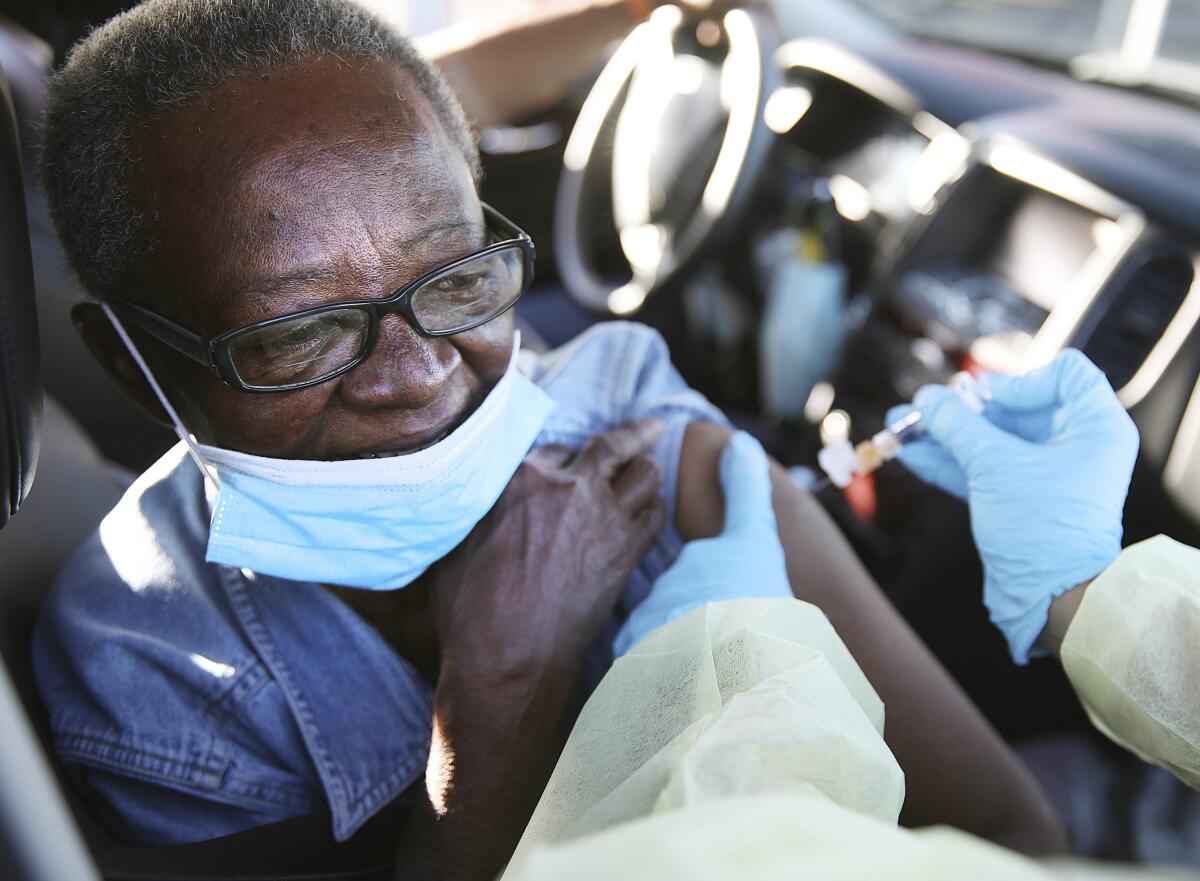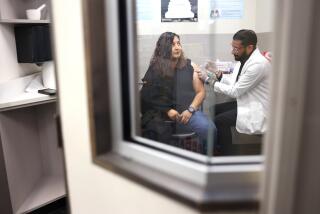Editorial: Don’t be part of the ‘twindemic.’ Get a flu shot

On Tuesday, I biked over to the local Kaiser clinic to get my flu shot. I get one every year, but never this early.
I usually wait until the autumn heat wanes and Southern California’s version of winter settles in, pushing people and gatherings inside where viruses spread more easily. This year, waiting for winter to get a flu shot seemed as risky as waiting for Nov. 3 to vote. I’ve had the flu. It’s not an experience I wish to repeat — especially if there’s a possibility of suffering from both the flu and COVID-19 at the same time.
And in 2020 it is a possibility. This year’s flu season is coinciding with what appears to be the start of the second wave of the coronavirus pandemic. Reported cases of COVID-19 in the U.S. have risen over the last week, according to the COVID Tracking Project, setting new records in a handful of states. In Canada, where winter comes earlier than in much of the U.S., authorities say the second wave has already landed.
Although health experts don’t know how hard the flu will hit this year, the prospect of a “twindemic” has them worried. Health providers are particularly urgent in their flu shot appeals this year, hoping to get their patients immunized before families come together for the holidays to share meals and pathogens.
Health authorities now agree that COVID-19 can be spread via aerosols that an infected person exhales (rather than expelling forcefully by a sneeze or cough), imbuing the air with the virus for up to three hours in an unventilated room. Influenza can spread that way too.
But even a mild flu season could overburden a medical system straining from COVID-19 cases. Remember the stories about overrun hospitals during the early days of the pandemic? Imagine how much worse things might be with a flu epidemic piled on.
In a typical year, millions of people in the U.S. are infected with influenza; over the last decade, hundreds of thousands of flu sufferers have been hospitalized, and between 12,000 and 61,000 people have died. The typical seasonal influenza is not nearly as deadly as COVID-19, but occasionally a particularly lethal strain breaks out of the routine. One of them was the “Spanish flu” of 1918 that killed between 50 million and 100 million people (medical record-keeping wasn’t great 100 years ago).
And while it’s not certain that having influenza makes a subsequent COVID-19 infection more dangerous, some medical professionals suspect that it could. Both viruses attack the respiratory system. They also present with symptoms so similar, it’s hard even for physicians to tell them apart without a test.
One important difference between the two is that while we are still waiting for a COVID-19 vaccine, we do have one for influenza that’s readily available at little or no cost. But astonishingly, less than half of American adults choose to take this simple preventive measure most years. Last year, just 48% of adults in the U.S. were immunized against influenza.
If you’ve never gotten a flu shot, this would be the year to start. There’s no good reason not to. Manufacturers have ramped up production, and so far 105.5 million doses have been distributed in the U.S., with millions more to come. Health providers are trying to make it safe and easy to get the shots, offering walk-in and drive-up vaccination clinics.
Distrust in vaccines in general has been growing in recent years, but there is still a mountain of data that shows all vaccinations are overwhelming safe. And getting a flu shot does not make getting the flu more likely. The shot contains inactive virus and the nasal spray vaccine uses an active fragment too small to make you sick, both of which trigger the creation of antibodies that can help fight off an infection.
To be sure, getting a flu shot is no guarantee that you won’t get infected. The effectiveness varies from year to year, but the vaccine rarely reduces your chance of getting sick by more than 50%. Developing seasonal flu shots is not an exact science because it requires scientists to predict which strain will be circulating far enough in advance that drugmakers can have doses ready by the time the flu season begins. But even if a flu shot doesn’t stop an infection, it will make getting the flu less terrible and deadly.
That was more than enough for me, even if there weren’t another deadly virus circulating out there. And all it cost me was an hour out of one morning (Kaiser is nothing if not efficient in delivering preventive care) — and a day nursing a sore arm and achy body. That’s nothing compared with the alternative.
More to Read
A cure for the common opinion
Get thought-provoking perspectives with our weekly newsletter.
You may occasionally receive promotional content from the Los Angeles Times.











